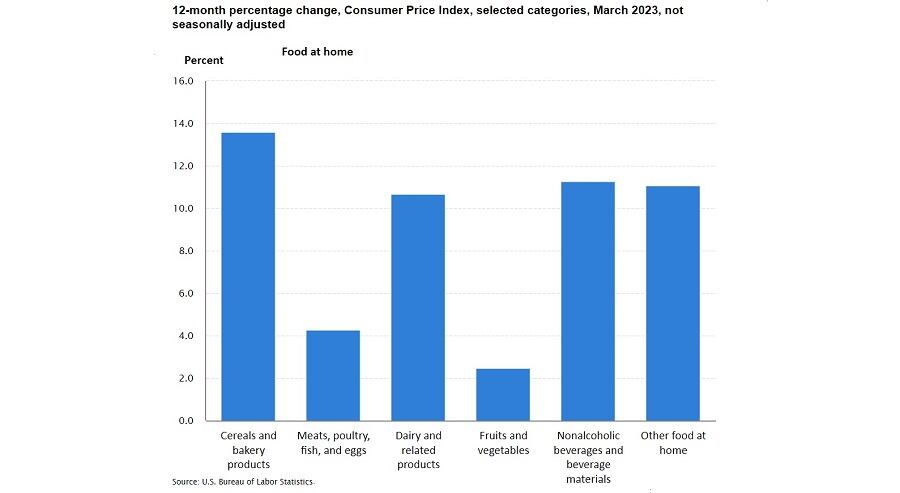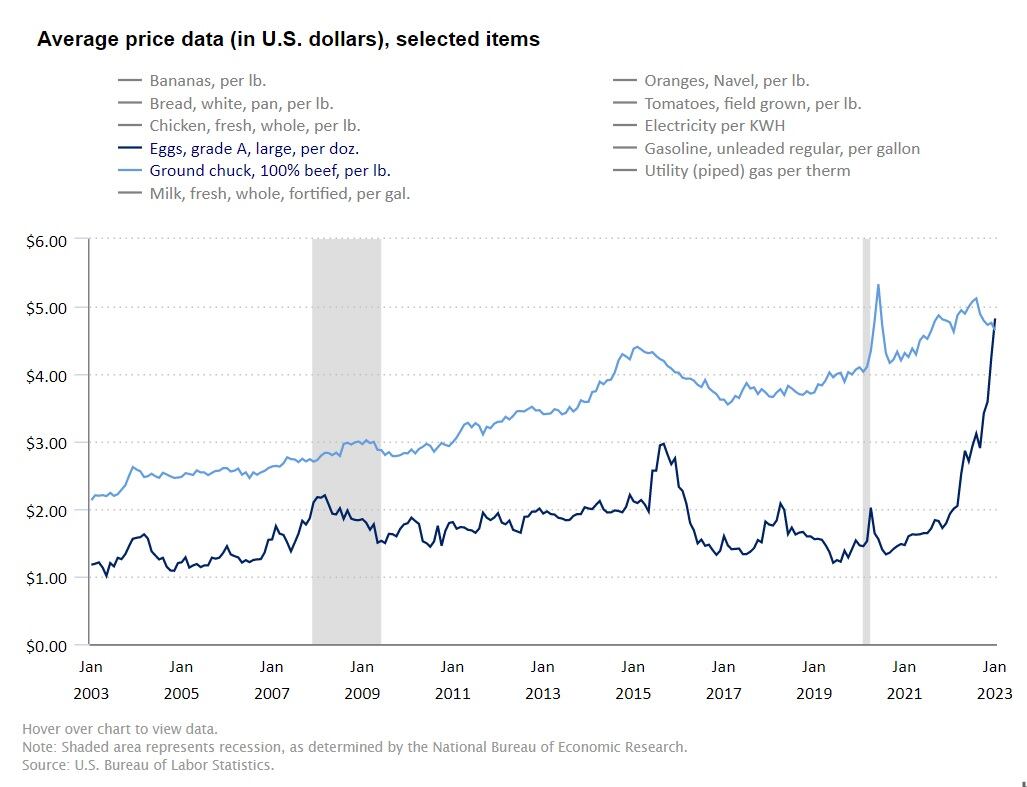The Consumer Price Index for March, released yesterday, shows seasonally adjusted prices for food consumed at home ticked down 0.3% compared to February – the first drop since September 2020.
This continues a month-over-month slowdown that began in November when prices for food consumed at home increased 0.6% over October, followed by a slowdown of 0.5%, 0.4% and 0.3% month-over-month for the next three months.
While the numbers are headed in a better direction for many, the overall food index was unchanged in March and up 8.4% year-over-year on unadjusted basis, according to the Bureau of Labor Statistics. This is still far lower than the double-digits of the past year, including a 13.5% year-over-year spike last August, which was the largest in more than 40 years. However, many manufacturers – and consumers – are struggling to absorb costs and prices that are higher than pre-pandemic.
Not all grocery prices are going down
The drop in prices for food at home came partly from a 10.9% drop in the price of eggs, which caught many manufacturers and consumers off guard when it spiked a whopping 11.1% last December over November and continued to climb 8.5% in January over December before dropping 6.7% in February over January, according to BLS.
This drop helped the index for meats, poultry, fish and eggs fall 1.4% in March, which in turn contributed to the lower food at home index. A 1.3% drop in the fruits and vegetables index over the past month and a 0.1% drop in dairy and related products during the period also contributed.
A 0.4% uptick in the index for other food at home following a 0.3% increase the previous month partially offset these improvements. The index for cereals and bakery products also climbed 0.6% over the month, as did nonalcoholic beverages, which were up 0.2% in March.
Shoppers continue to hold back, seek deals
While lower prices of eggs, meat, poultry, fish, produce and dairy likely are welcome to consumers, many shoppers remain hesitant to buy, according to data from AdAdapted.
Based on “add-to-list” data – items that shoppers include in their online shopping lists – consumers’ intent to buy meat, poultry, fish and eggs fell 8.8% year-over-year in March – a 4.8% decrease from February. Likewise, their intent to buy non-alcoholic beverages fell 10.9% year-over-year, representing a 2.7% drop from February, according to the data, which is not seasonally adjusted.
As demonstrated by the sharp decline in the data, AdAdapted suggests shoppers still are looking for ways to reduce their costs and cutting back “drastically on non-essential items.”




